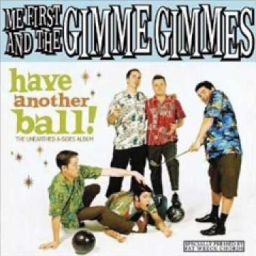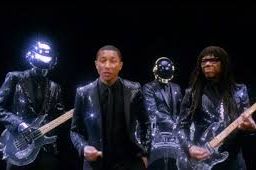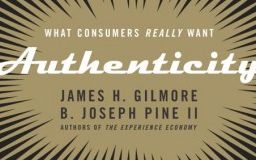
The New York Times has a very odd article about Girl Talk and copyright, originally subtitled “DJ flouts copyright law”, now “DJ skirts copyright law” — two very different legal positions! The article tries so very very hard to be balanced between copyright ownership and OMG-ing about Girl Talk that any larger point quickly devolves.
The D.J. Girl Talk has won positive reviews for his new album and news media attention for its Radiohead-style pay-what-you-want pricing…. Not bad for an artist whose music may be illegal.
Girl Talk, whose real name is Gregg Gillis, makes danceable musical collages out of short clips from other people’s songs; there are more than 300 samples on “Feed the Animals,” the album he released online at illegalart.net in June. He doesn’t get the permission of the composers to use these samples, as United States copyright law mostly requires, because he maintains that the brief snippets he works with are covered by copyright law’s “fair use” principle (and perhaps because doing so would be prohibitively expensive).
And here is the law, ya’ll, NYT style, with the most egregious omissions edited in brackets:
But this embrace [of pop] may be an illicit one, according to music industry executives. In legal terms a musician who uses parts of other compositions creates what copyright law calls a derivative work [How much use of another work would make the new work derivative isn’t clear; Patry on Copyright:”Without incorporation of a substantial amount of protectible material from a copyrighted work, a subsequent work cannot be considered a derivative work”], so the permission of the original song’s writer or current copyright holder is needed [, assuming the original composition is not in the public domain]. Artists who sample a recording also need permission from the owner [of copyright of the specific recording being sampled], in most cases the record label. Hip-hop artists who don’t get that permission have been sued, often successfully. [But the record industry also uses remixes/samples as greymarket goods, as part of officially sanctioned mixtapes.]
Mr. Gillis says his samples fall under fair use, which provides an exemption to copyright law under certain circumstances. Fair use allows book reviewers to quote from novels or online music reviewers to use short clips of songs. Because his samples are short, and his music sounds so little like the songs he takes from that it is unlikely to affect their sales, Mr. Gillis contends he should be covered under fair use.
Here there was a lost opportunity to discuss the different ways copyright works in addressing the two aspects of DJing — the live spinning/mixing versus recordings (either of live music or studio productions). Arguably, if a venue has licenses to play music from ASCAP/BMI to play entire songs, then they also have the license to play live samples and created-live remixes of those same songs. Therefore, non-recorded DJing likely has more wiggle room.
Moving beyond the law, perhaps it is too much to ask of the New York Times to talk at length about the history and substance of DJ culture, but no mention of it? Or of the racial dynamics? I cannot believe that the only artists mentioned who sample/remix/mashup within the article are: 2 Many DJs [AKA Soulwax], Beastie Boys, and Public Enemy. The article gives the impression that U.S. DJ culture has been dead for decades (yes, Paul’s Boutique came out nineteen years ago), and we were just waiting with bated breath for Girl Talk to bring it on home. Yeah, right.
Paul Miller (AKA DJ Spooky) would have been an excellent person to interview for this article, considering that he is the unofficial spokesperson for remix culture — at least according to Wisconsin Public Radio. His latest edited book, Sound Unbound: Sampling Digital Music and Culture, which I will hopefully have a review on this blog, has lots of interesting discussions of the value of using slivers of music from others, from artists ranging from Saul Williams to Cory Doctorow. (Full disclosure: I interviewed DJ Spooky for an article in Clamor magazine.) The article doesn’t even quote from anything written about sampling and the law — say Chapter 4, “Hep Cats and Copy Cats”, in Siva Vaidhyanathan’s Copyrights and Copywrongs.
Showing the difference in DJ artistry between live and recorded music — and the difference in hype created around different artists, I saw Girl Talk in Chicago at Lollapolooza and was completely unimpressed. This despite his recorded music being is quite good; I especially like the remixes of Radiohead. I left to hear Flosstradamus, who are consistently great, yet have not received half of Girl Talk’s hype.
Oddly enough, several days after the Girl Talk article, Jeffrey Lewis’ Rip-Off Artist personal essay appeared in the New York Times:
All aspects of creativity are basically reconstituted bits and pieces of things we’ve seen, heard and experienced, finely or not-so-finely chopped and served in a form that hopefully blends the ingredients into something “new.” The ancient Greeks seemed to know this, expressed in their belief that the Muses of creativity were the daughters of Mnemosyne, Titan goddess of memory. Perhaps we would like to think that the thoughts that go into creating a new song are purely impressions from “real life,” but a melody does not suggest itself as much from the impression of the 6 train ride you took this morning as it does from a melody from another song. The same for chord progressions, song concepts, lyric sounds and patterns, song structures and everything else. Folk music is supposed to be a shared continuum after all, and as Louie Armstrong said, “All music is folk music, I ain’t never heard no horse sing a song.”
Despite knowing all this, as a supposedly “creative” artist I am often shocked to discover that a song I’ve written has been a blatant unconscious rip-off of somebody else’s song, either in its structure, or lyrics, etc; if I’m lucky the other person’s song is not particularly popular or recognizable! …
Thus so many of us snobby “real” artists are just cover artists in disguise, taking various devious steps to confuse our listeners into praising our “songwriting.” Perhaps what I do should be called “song-composting,” “song-mulching,” “song-smoothie-ing,” something like that. Or you could just call it “ripping off” and take me to court. I’d probably lose.
Assuming that Lewis is correct — that all musical artists reuse the works of others, how should copyright continue to play a role in using samples? At what point should ownership outweigh new creativity? These are the types of questions the Girl Talk article should have raised!




